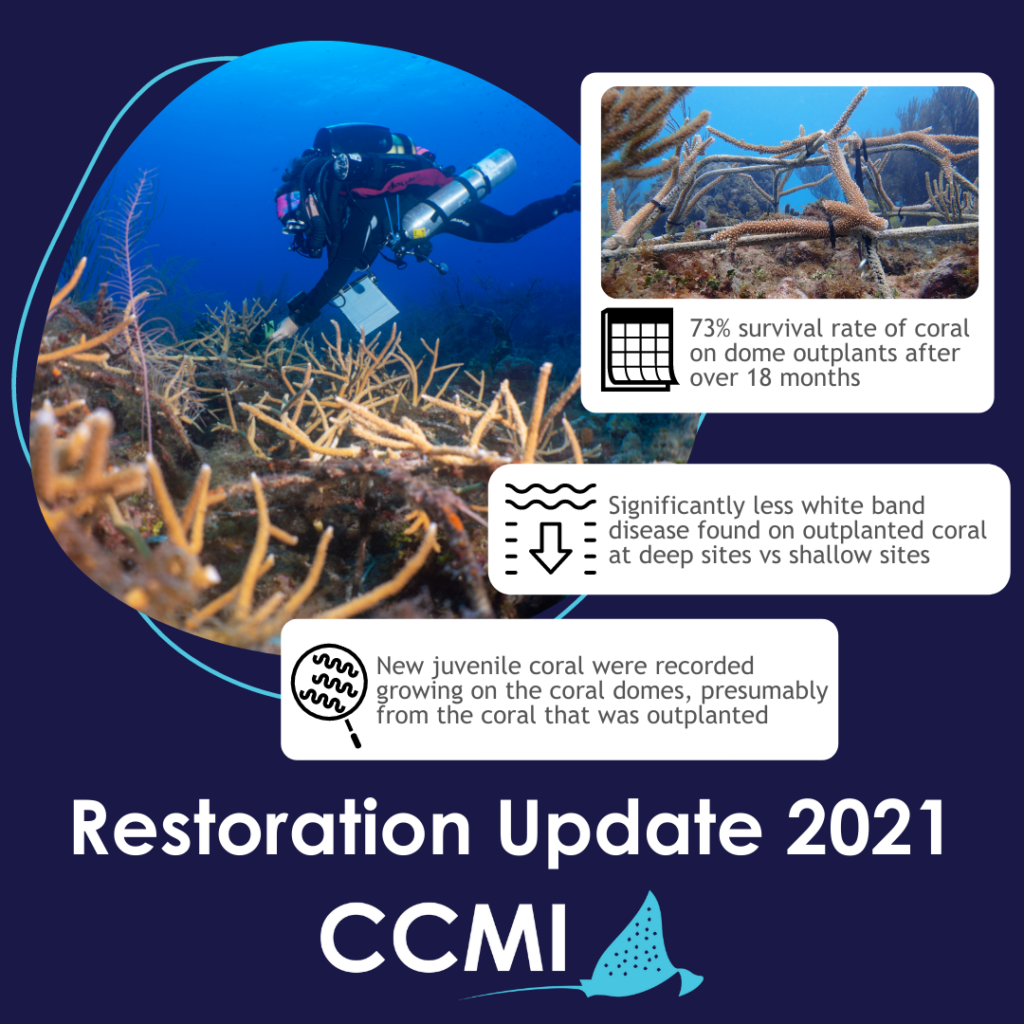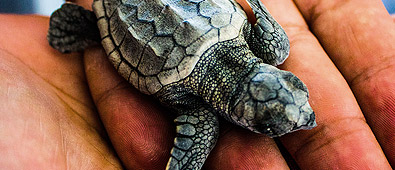Coral Reef Restoration
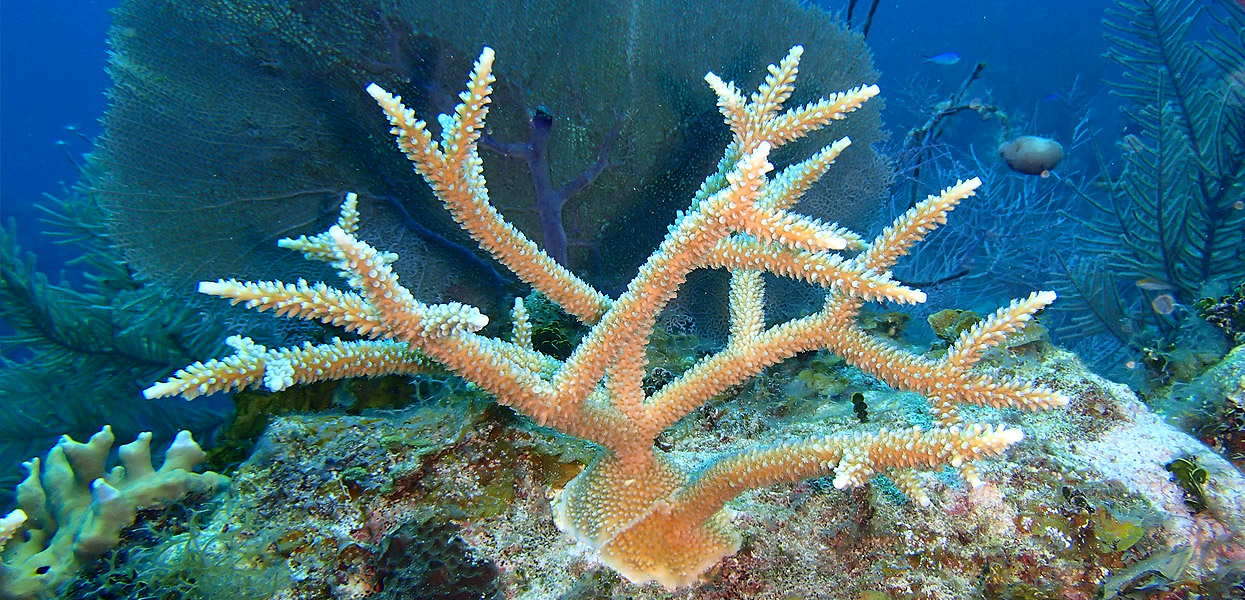
This project is funded by the European Union.
Project Summary
This coral restoration project ran from February 2022 to the end of 2023 and built upon CCMI’s restoration research, aiming to conduct thermal tolerance experiments, to inform and improve restoration strategies in the face of climate change.
The recently released results from CCMI’s project will help to guide strategies and increase the overall success of coral restoration thereby sustaining coral reef biodiversity and promoting regional reef resilience in a period of unprecedented threats to coral reefs.
The project results emphasise the essential nature of genetic diversity within coral restoration practices. Managers must select for diversity and understand the genetic composition of their nurseries to improve the resistance and resilience of coral restoration efforts to the multitude of stressors that face coral reefs now and in the future.
Project Outputs
This knowledge is contributing to developing tangible solutions to coral reef adaptation methods for reef managers throughout the region, including European/UK overseas territories. CCMI have developed a coral restoration handbook from the results of this project, which includes detailed recommendations for managers looking to select for resilience within coral restoration.
Coral restoration handbook – ENGLISH
Coral restoration handbook – SPANISH
Coral restoration handbook – FRENCH
Coral restoration handbook – DUTCH
To find out more about this RESEMBID-funded project, see this project report.
This website page was created and maintained with the financial support of the European Union. Its contents are the sole responsibility of the Central Caribbean Marine Institute (CCMI) and do not necessarily reflect the views of the European Union.
© 2024 The Central Caribbean Marine Institute.
All rights reserved. Licensed to the European Union under conditions. 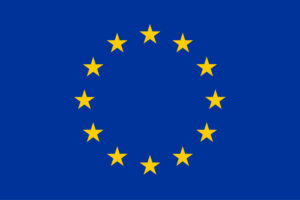
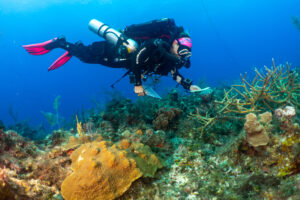

This project receives funding from The Caribbean Overseas Countries and Territories (OCTs) Resilience, Sustainable Energy and Marine Biodiversity Programme (RESEMBID). RESEMBID is a €40M programme financed by the European Union and implemented by Expertise France – the development cooperation agency of the Government of France in collaboration with the Global Facility for Disaster Reduction and Recovery (GFDRR). RESEMBID supports sustainable human development efforts in 12 Caribbean OCTs – Aruba, Anguilla, Bonaire, British Virgin Islands, the Cayman Islands, Curaçao, Montserrat, Saba, Sint Eustatius, Saint Barthélemy, Sint Maarten and Turks and Caicos.
CCMI’s coral restoration project’s overarching long-term goal is to improve biological diversity by developing a model for sustaining wild populations of restored corals over the next five years.
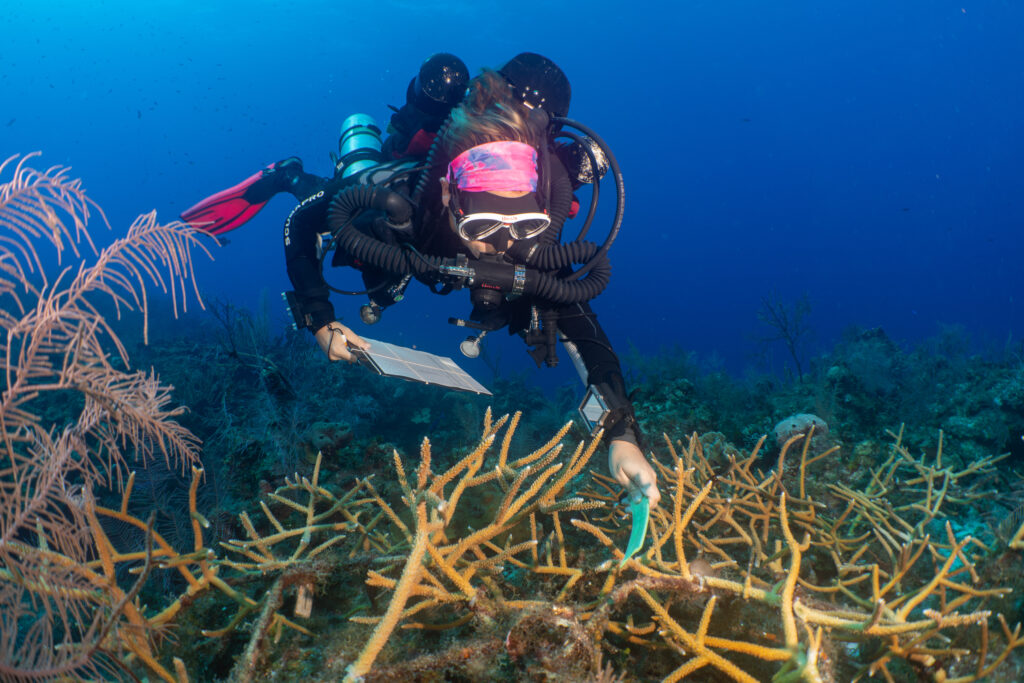 The objectives of this project are to:
The objectives of this project are to:
1) Expand our understanding of resilience
2) Further improve the outplanting success
3) Support local education
CCMI’s research-focused restoration project not only bridges a gap in the coral restoration process but helps
1) deliver a more aggressive, solutions-based research project by enabling us to scale up the work,
2) provides opportunities in the future via a project team with greater skills and professional leverage, and
3) support students as a part of the project team.
Project results support capacity building within the region and improved coral reef management methods, as we identify genetic resistance and resilience of corals to thermotolerance, storm impacts, and improved out planting technologies, boosting the wild population of corals.
 Outplanting Success – Increasing Coral Cover of Endangered Species – funded by the AALL Foundation
Outplanting Success – Increasing Coral Cover of Endangered Species – funded by the AALL Foundation
Over the last 5 years we have seen significant success for the restoration project. In particular, altering our outplanting methods to place corals on top of a dome shaped structure greatly improved survival rate (80%+) in comparison to traditional outplanting methods directly to the reef substrate (less than 9%). It is thought that by elevating coral outplants from the substrate we are reducing the impact of competition and predators, creating a more successful outcome for growth and survival.
Given this success we expanded our restoration efforts to a series of 6 sites across 2 different depths. After 18 months, the survival rate across these sites was 73%, which is extremely positive. Importantly, this work led to increased understanding of how site selection can have a dramatic impact on survival as well as outbreaks of disease. Long-term restoration projects are uncommon, so the success rate of these domes gives us a rare opportunity to understand how the entire ecosystem is being from the restoration activity.
Complex Ecosystem Services – Positive Impacts on Fish Populations – funded by the Alexandria Foundation
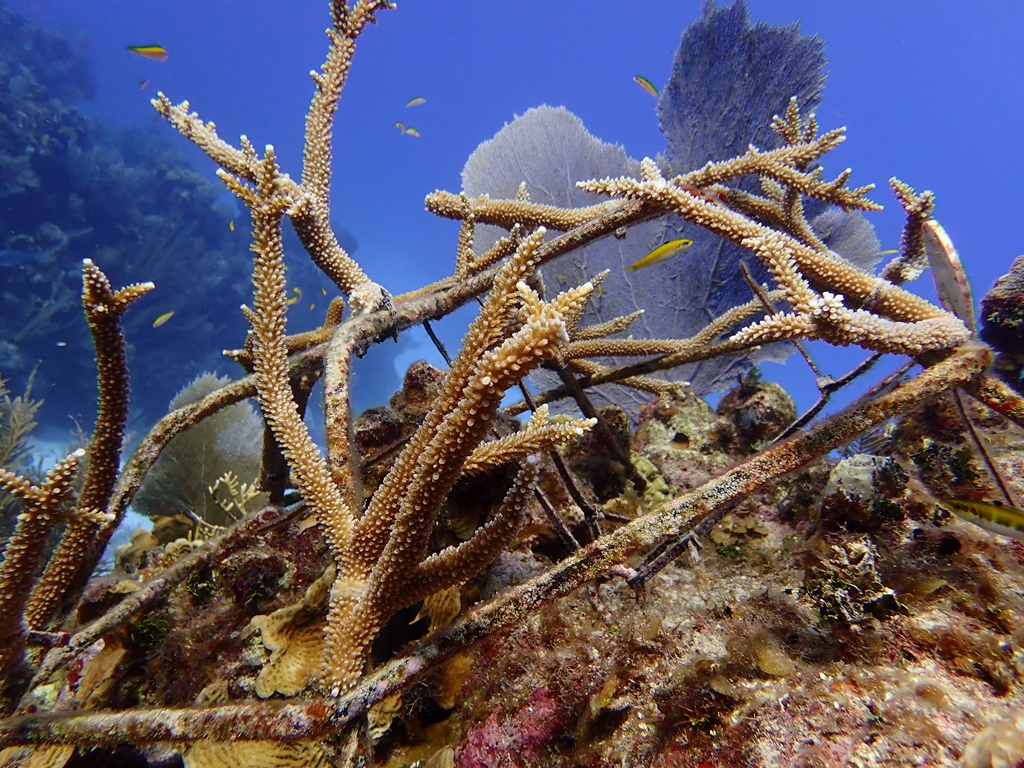
Corals provide shelter and refuge areas for diverse fish assemblages by virtue of their 3-dimensional relief. Corals facilitate both processes of recruitment and biomass production by providing space for settlement, growth and reproduction. While providing shelter, corals also set the stage for biological interactions such as competition and predation. This project sought to understand if creating enhanced complexity reef (ECR) habitats through transplantation of adult coral colonies to 3-dimensional structures (our restoration sites) would not only impact fish population diversity and abundance on the ECR itself but also on adjacent degraded reef sites. Suggesting that restoration efforts may offer a scalable mitigation strategy to restore fish populations, for both herbivorous and commercially important species from our coral restoration efforts.
Results from 18+months of surveys indicate a significant increase in both the density of fish at outplanted sites as well as the number of species present. These data suggest that ouplanting corals onto our dome structures does in fact have a positive impact on the local reef fish population, and thus as our outplanting efforts increase, so will the health of fish populations.
CCMI is a pioneer in the Cayman Islands in coral restoration. In 2012, a pilot study was established to explore the potential for coral nurseries. With results from this work, the Cayman Islands Department of Environment passed new policy and coral nurseries have spread across the islands, with 5 private entities currently growing coral as a result of CCMI’s work in this area.
This project seeks to have a long-term positive impact on the preservation of corals which provide the framework for all coral reefs. As with many coral restoration programmes, the staghorn coral (Acropora cervicornis) is ideal to use, due to its ease of fragmentation and growth, and it’s endangered status. The ultimate goal of coral regeneration is to help nature nurture itself. To do this, outplanted corals need to establish a viable, locally connected, sexually reproductive population. The more genetically diverse the nursery-reared outplants, the better. When fragments were collected from five parent colonies in 2012, it was unknown if these came from genetically distinct parents or from genetic clones. Fragments were tagged and kept separate from one another within the nursery until genetic analyses could be performed. Recent results from genetic work on an additional 100 corals from across the three Cayman islands by University of Miami scientists (Dr. Diego Lirman and PhD candidate Crawford Drury) has led to a new understanding of the connections of the species across the region. Cayman and Florida corals show the closest relationship and new maps for improving the protection and management of threatened coral species are now in progress. This information will not only help coral nursery managers and stakeholders to select unique donor colonies, but will also assist in guiding future outplant strategies.
Results from the collaborative genetics sampling study were used to create the first map of staghorn coral genetic distribution in the Cayman Islands. Below is the map for Little Cayman, with each yellow dot representing a genetically unique staghorn coral colony.

CCMI is constantly developing and refining its coral nursery methods and techniques. Major accomplishments between 2012 and 2017 include:
- Propagation of 1000+ coral fragments starting from 10 parent colonies.
- The expansion of the nursery into a shallow water nursery located at 20ft of depth and a deep water nursery located at 60ft of depth. The deep nursery offers a site removed from storm activity and actually requires less maintenance than the shallow nursery.
- Nursery expansion from 1 to 15 coral “trees”, each with 100 fragments capacity. Nursery expansion and space for 15 lines to which fragments may be transferred as they outgrow the trees.
- Nursery expansion with the introduction of 12 coral “frames”, six in the shallow water nursery and six in the deep water nursery; each has the capacity to hold 50 fragments.
- Lessons learned were written into the first National Coral Nursery Policy by the Cayman Islands Department of Environment which was approved by the Cabinet in November of 2014.
- CCMI’s improved coral fragmentation method was published in the Endangered Species Research scientific journal and presented at the Benthic Ecology Meeting (2014) in Jacksonsville, FL.
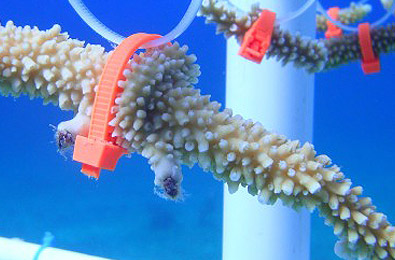
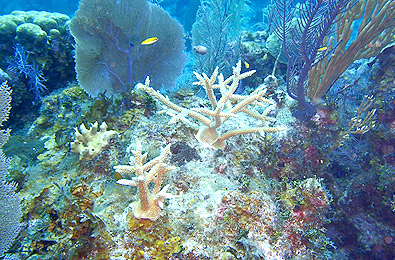
The Little Cayman Nursery is permitted by the Department of Environment, under the auspices of the National Coral Nursery Policy.
CCMI’s ongoing coral restoration project work is sponsored by
Dart Cayman Islands, the Disney Conservation Fund, the Dart Foundation, Ernest Kleinwort Charitable Trust, Consolidated Water Company, Stuarts Humphries, the AALL Foundation, an anonymous donor, and the Darwin Plus Initiative.


